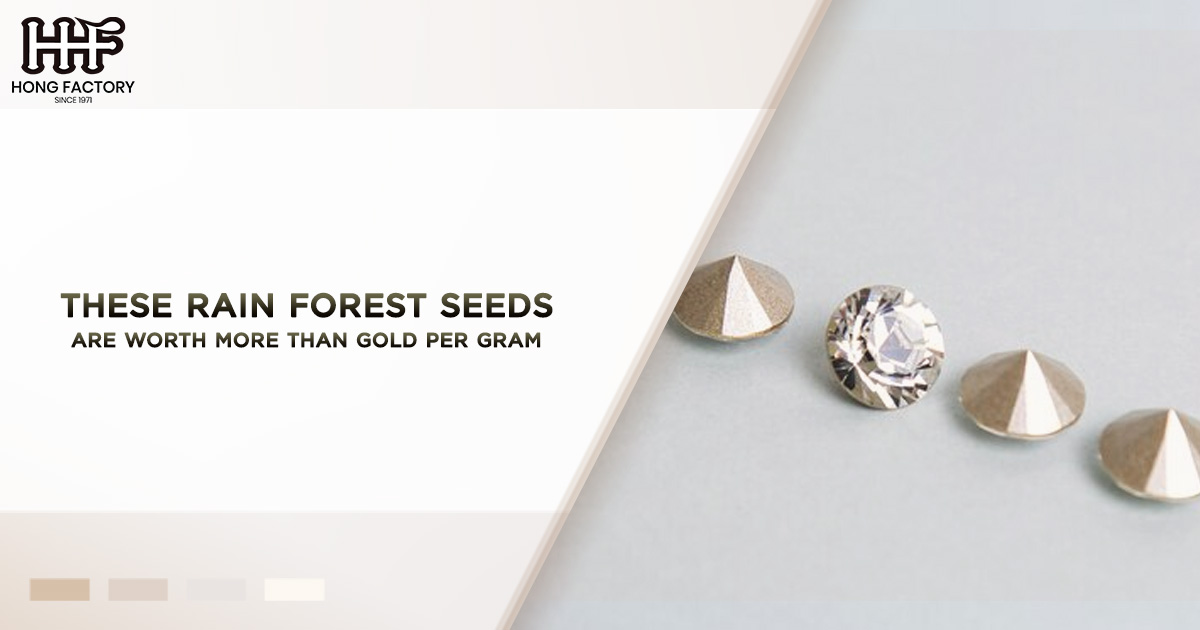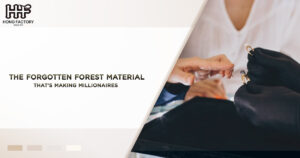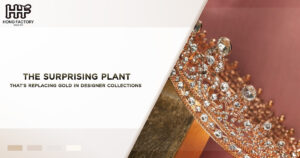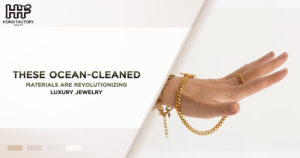Rainforests, often called the “lungs of the Earth,” are teeming with life and resources that are not only vital for sustaining ecosystems but are also increasingly sought after in the world of sustainable luxury. Among these treasures lie rare seeds that hold extraordinary value, sometimes exceeding the price of gold per gram. But what makes these rainforest materials so exceptional? How can they provide value while being harvested sustainably? Let’s delve into the fascinating world of rainforest materials, the role of rare seeds, and their potential in shaping a greener future.
The Hidden Wealth of Rainforest Materials
Rainforests are home to around 50% of the world’s terrestrial biodiversity, even though they cover only about 6% of the Earth’s surface. Beyond their ecological importance, they offer a treasure trove of resources — exotic materials that are natural, rare, and often revered for their beauty or effectiveness.
Rare seeds from the rainforest stand out as some of the most valuable materials, prized for their unique properties in industries ranging from cosmetics to health, food, and even fashion. Unlike unsustainable practices such as mining or deforestation, harvesting seeds often allows communities to benefit economically while preserving the forest’s integrity.
Rare Seeds – Nature’s Gold
Rare seeds, with their unique traits and limited availability, earn their high value through a combination of scarcity, utility, and sustainability. Here are some examples of these coveted rainforest seeds
Tonka Bean (Dipteryx odorata)
Tonka beans, sourced from the seeds of the Tonka tree in the Amazon rainforest, are prized for their rich, complex scent. Used extensively in luxury perfumes and gourmet cuisine, these seeds can fetch hundreds of dollars per kilogram due to their rarity and distinctive fragrance, often compared to a blend of vanilla, almond, and cinnamon.
Tonka bean harvesting is a sustainable practice, as only fallen seeds are collected, leaving the mother tree intact. This ensures the continued growth of the forest ecosystem while providing local communities with a lucrative income source.
Copaiba Seeds
Copaiba seeds come from the Copaifera tree, a species found in South America. The seeds are known for their health benefits due to their essential oil content, which possesses anti-inflammatory, antimicrobial, and analgesic properties. Copaiba oil is used in wellness products and is gaining traction in the natural beauty sector.
By sustainably harvesting Copaiba seeds, indigenous communities and small-scale farmers can generate income while preserving the rainforest’s biodiversity.
Brazil Nut (Bertholletia excelsa)
Known as one of the most iconic rainforest materials, Brazil nuts are not only a delicious and nutritious snack but also an economic staple for many Amazonian communities. Brazil nut trees depend on intricate ecological relationships within the rainforest for pollination, making large-scale plantations impossible.
The high demand for Brazil nuts supports sustainable forest management, creating financial incentives to protect vast tracts of the Amazon. Rare seeds like these prove that entire ecosystems can thrive when local economies are aligned with conservation efforts.
Açaí Seeds (Euterpe oleracea)
Popularized globally as a superfood, açaí berries contain seeds that are also valuable. The seeds are used for artisanal crafts, jewelry, and sustainable fuel production. The global demand for açaí has incentivized sustainable practices, enabling forest preservation while enriching local economies.
Tagua Nut (Phytelephas aequatorialis)
Known as “vegetable ivory,” the tagua nut is a seed from the ivory palm tree found in South America. Tagua is an eco-friendly alternative to animal ivory, used in making buttons, jewelry, and carvings. Its luxurious appearance and ethical superiority make it highly desirable in the fashion and artisan industries. Harvesting tagua nuts supports reforestation projects and combats illegal poaching, making it a true symbol of sustainable luxury.
Why These Materials Cost More Than Gold
At first glance, it may seem surprising that natural rainforest materials like rare seeds can rival or even exceed the price of gold, but let’s break down the reasons why
- Scarcity – Many of these seeds require specific environmental conditions to grow, are produced in limited quantities, or have a short harvest season.
- High Demand – From luxury cosmetics to niche wellness products and eco-friendly crafts, the demand for rare seeds and exotic materials continues to surge.
- Sustainable Harvesting – Ethical sourcing practices require time and effort, which adds to their cost. However, sustainable harvesting ensures long-term resource availability without harming ecosystems.
- Exclusivity – Many rare seeds are used in artisanal or luxury products, appealing to consumers seeking exclusivity, rarity, and items with a positive environmental impact.
How Rare Seeds Support Sustainable Luxury
The global shift toward sustainability is inspiring both brands and consumers to rethink resource extraction in favor of materials that harmonize with nature. Rare rainforest materials, including seeds, epitomize this philosophy. They offer a model for balancing economic development with environmental stewardship.
- Empowering Indigenous Communities
Harvesting rare seeds often involves local and indigenous populations, who know the ecosystem intimately. By partnering with these communities, companies can ensure ethical sourcing and reinvest profits into regional development.
For example, the Brazil nut industry has empowered Amazonian communities with income while enabling them to protect valuable rainforest habitats.
- Reducing Deforestation
When rainforest materials are sustainably sourced, deforestation risks are minimized. Rare seed harvesting typically doesn’t involve cutting down trees; instead, it incentivizes communities to protect forests for continued seed production, ensuring a win-win for both people and the planet.
- Supporting Green Innovation
Rare seeds have inspired innovation in sustainable luxury, from high-end eco-friendly fashion made with tagua nut buttons to biodegradable packaging using seed-derived materials. These seeds are catalysts for green engineering and design, proving that rainforest materials can combine luxury with responsibility.
Challenges and the Road Ahead
While rare seeds are a beacon of sustainable resource use, challenges remain. Unsustainable harvesting practices, illegal poaching, and climate change all pose significant threats. To mitigate these risks, the following measures are crucial
- Enforcing Regulations – Governments and organizations must implement stringent policies and guidelines to protect rainforests and ensure ethical trade of rare materials.
- Transparency in Supply Chains – Brands must commit to traceable sourcing to guarantee consumers that their purchases support sustainability efforts.
- Promoting Awareness – Educating the public about the value of rainforest ecosystems and rare seeds can boost demand for sustainable luxury while discouraging illegal practices.
How Consumers Can Contribute
As a consumer, you play a vital role in supporting sustainable practices. Here’s how you can make a difference
- Look for products certified by organizations like Fair Trade, Rainforest Alliance, or Forest Stewardship Council (FSC).
- Choose brands that are transparent about their sourcing and partnerships with indigenous communities.
- Avoid products derived from illegal logging or unsustainable practices.
Conclusion
Rare seeds symbolize the untapped potential of rainforest materials to drive economic and environmental change. As sustainable luxury gains momentum, these exotic materials will likely hold even greater value, not just for their price per gram but for the ecological balance they represent. For consumers, businesses, and governments, these seeds of change are a reminder that sustainable practices are not only ethical but also profitable.
The next time you encounter a beautifully crafted tagua bracelet or a jar of Copaiba oil, remember — you’re not just holding a product. You’re holding a piece of the rainforest, a sustainable treasure more precious than gold.




